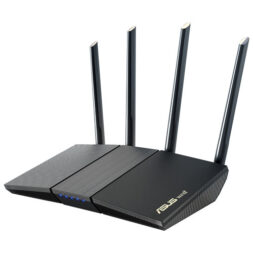
From its pioneering stages in the late 1990s to the ground-breaking capabilities of Wi-Fi 6 today, wireless networking technology has dramatically transformed access to information, communication, and interaction with the digital environment. No longer restrained by the limitations of wired connections, the world experienced a newfound freedom in Internet access. Take a journey through the significant milestones of Wi-Fi and learn how each evolution has enriched modern digital experiences and paved the way for a connected future.
A brief history of Wi-Fi generations
Wi-Fi 1 & 2: The first generation of Wi-Fi (Wi-Fi 1), also known as 802.11, debuted in 1997. With a maximum speed of 2 Mbps, it laid the foundation for the wireless revolution. Its successor, Wi-Fi 2 (802.11b) released in 1999, took a leap forward, providing speeds up to 11 Mbps and saw broader adoption.
Wi-Fi 3: By the early 2000s, the demand for faster internet was evident. Wi-Fi 3 (802.11g), introduced in 2003, responded to this need by offering speeds of up to 54 Mbps, providing a more seamless internet experience, especially in multimedia streaming.
Wi-Fi 4: In 2009, Wi-Fi 4 (802.11n) marked a significant advancement and became the standard. It added multiple-input and multiple-output (MIMO) antennas, allowing for multiple data streams, which led to speeds surpassing the 100 Mbps threshold.
Wi-Fi 5: As the decade progressed, so did Wi-Fi technology. 2014 brought Wi-Fi 5 (802.11ac) to the forefront. Utilizing the 5GHz band primarily and Multi-user MIMO (MU-MIMO), it unlocked gigabit wireless speeds and provided better performance, particularly in environments with numerous devices and networks such as crowded apartments or offices.
Further advancements led to the adoption of Wi-Fi 6 in 2019, which is the current standard at the time of publication.
The game-changing features of Wi-Fi 6
Each new Wi-Fi generation brought with it notable enhancements. However, with Wi-Fi 6 (802.11ax) the advancements are not just iterative; they are transformative. Here are some of the standout characteristics that make Wi-Fi 6 truly game-changing:

- Greater speed and capacity: Wi-Fi 6 promises more than just faster speeds reaching up to 9.6 Gbps. Its design optimally handles a larger number of devices simultaneously, making it ideal for households and businesses filled with connected devices.
- Superior connectivity in dense environments: Be it at a bustling cafe, a packed stadium, or a high-rise apartment block, Wi-Fi 6 ensures a more consistent and robust connection—even where numerous devices compete for bandwidth.
- Improved battery life for devices: One of the unsung benefits of Wi-Fi 6 is its Target Wake Time (TWT) feature. By allowing devices to schedule their check-ins with the router, devices can optimize power usage and spend more time in sleep mode, prolonging their battery life.
- Enhanced security: Security remains paramount today. Wi-Fi 6 steps up with WPA3 encryption, the latest and most secure iteration in Wi-Fi protection, ensuring that users’ personal and professional data remains safeguarded.
How Wi-Fi 6 impacts home and office networking

Wi-Fi 6 brings a plethora of advancements, but how do these innovations translate to everyday experiences in homes and workplaces? Beyond just faster internet speeds, the implications of Wi-Fi 6 ripple through various other aspects. Here are some of the tangible benefits and changes you can expect in both home and office networking environments:
- Optimizing the Internet of Things (IoT) ecosystem: The increasing adoption of IoT devices, from intelligent lighting to smart thermostats, demands a robust network. Wi-Fi 6 meets this demand, providing the enhanced bandwidth and efficiency to ensure seamless integration of these devices.
- Strengthening remote work dynamics: With remote work, a stable and fast internet connection is crucial. Wi-Fi 6 facilitates high-quality video calls, faster data transfers, and efficient cloud-based collaborations, ensuring professionals can work from home without a hitch.
- Future-proofing network infrastructure: Adopting Wi-Fi 6 is an investment in future-readiness. As technologies evolve and more devices enter the scene, homes and businesses equipped with Wi-Fi 6 will be better prepared to integrate and adapt to the continued growth in the number of connected devices.
- A user experience like never before: For everyday users, Wi-Fi 6 means smoother streaming, faster downloads, and an overall enhanced online experience. Its ability to manage multiple devices ensures that everyone gets a slice of the high-speed internet pie, irrespective of the number of connected devices.
Upgrade your router and enjoy the benefits of Wi-Fi 6
The journey from Wi-Fi 1 to Wi-Fi 6 is a testament to how technology continuously evolves to meet ever-growing needs. Wi-Fi 6, with its unparalleled speeds, efficiency, and security, is set to redefine connected experiences at home, work, and public spaces.
Shop Wi-Fi 6 networking solutions at Best Buy today to enhance your internet experience.
This article was drafted using AI technology and then reviewed, fact-checked, and revised by a member of our editorial team.




